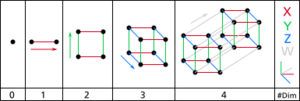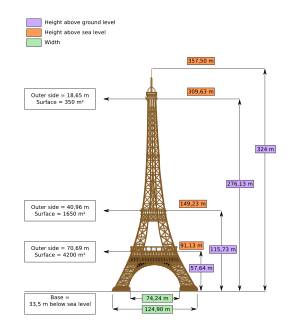Dimension facts for kids
Dimensions are a cool idea used in mathematics and physics. They help us describe how big things are, where they are, and even when events happen.
Imagine you're talking about an everyday object, like a book or a table. You usually describe it using three main dimensions: its length (how long it is), its width (how wide it is), and its depth or height (how thick or tall it is). Scientists and mathematicians often call this idea "Euclidean space."
Dimensions can also help us figure out a specific position. For example, if you want to tell someone exactly where something is, you could measure its distance in different directions from a starting point. These distances act as measurements for its position.
Sometimes, we even use a fourth dimension: time. This helps us pinpoint an event not just in space (where it happened), but also in time (when it happened). Think of it like a movie scene – it happens at a certain place and at a certain moment.
Different Kinds of Dimensions
In science, especially modern science, people use the idea of dimensions in many ways. It's not just about length, width, and depth anymore!
For example, dimensions like temperature or weight can be used to describe things in more complex ways. Imagine you're describing a hot air balloon. You might talk about its size (length, width, height) but also its temperature, which is another important dimension for understanding how it works.
Mathematicians also use dimensions, but their ideas can be even more general. In math, a dimension might not always be something you can physically measure in the real world. The rules for working with these mathematical dimensions can sometimes be different from the usual rules we use for everyday measurements.
Dimensions and Vectors
Vectors are special tools used to show both distances and directions. They are super useful in engineering, drawing, and science, and of course, in mathematics.
A vector is basically a list of numbers. Each number in the list tells you something about a different dimension. There are specific math rules for how to add, subtract, or change vectors.
Let's say Jane wants to know exactly where her friend Sally is. Sally could give Jane a vector to show her position. If Jane and Sally are just walking around in the world, we usually think of three dimensions. So, Sally would give Jane a list of three numbers to describe her location. These three numbers in the vector might tell Jane:
- Sally's distance north of Jane
- Sally's distance east of Jane
- Sally's height above Jane (if Sally is on a hill or in a building)
See also
 In Spanish: Dimensión para niños
In Spanish: Dimensión para niños



